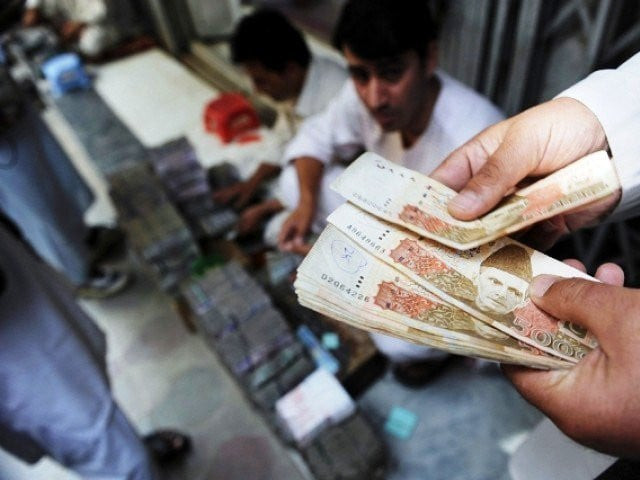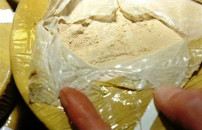Rupee losing streak continues
Currency sheds Rs7.17 to a dollar; gold breaches Rs200k mark

The rupee continued its downward slide for the second consecutive day on Friday, losing Rs7.17 to a dollar or 2.73% to close at a new all-time low of Rs262.60 against the greenback in the interbank market, while gold breached the Rs200,000 level for the first time ever in the country’s bullion market.
The rupee’s free-fall came as the government ended its control on its price in order to revive the International Monetary Fund (IMF) loan programme. On Thursday, the Pakistan currency saw the single largest drubbing in a day of 9.61% or Rs24.54 to reach Rs255.43 against the greenback.
With the latest drop, the domestic currency has cumulatively slumped by 12% or Rs31.71 in the past two days, compared to Wednesday’s close of Rs230.89 to a dollar, according to the State Bank of Pakistan (SBP) data. Also, the foreign exchange reserves also fell to mere $3.7 billion.
The currency hit intra-day low of Rs268.30 during the day, according to Exchange Companies Association of Pakistan (ECAP). It, however, partially recouped the intra-day losses towards the end of the session.
The currency maintained the downward streak following the government ended its control over the rupee-dollar exchange rate and let market forces – mostly commercial banks – determine it under an IMF condition.
Pakistan is seeking the revival of the stalled IMF programme of $6.5 billion to avert the looming high risk of default on international payments. The SBP said in its latest weekly update on Thursday that the forex reserves further depleted by $923 million – barely enough for two to three weeks’ import requirement.
Besides, Pakistan is scheduled to repay foreign debt worth $7 billion in the last five months (Feb-Jun) of the current fiscal year 2023. It will repay another $74 billion in the next three years – fiscal year 2024 to fiscal year 2026.
The revival of the IMF programme will help the government raise a new debt of around $3 to 4 billion over the next couple of months from multilateral and bilateral creditors, including from the IMF, World Bank (WB), Asian Development Bank (ADB), Asian Infrastructure Investment Bank (AIIB) and friendly countries like China, Saudi Arabia, United Arab Emirates and Qatar.
Earlier, the multilateral and bilateral creditors have pledged around $10 billion in flood relief to the country. They all are waiting for revival of IMF loan programme. The IMF team is due to visit Pakistan on January 31 to conduct ninth review of the domestic economy.
Moreover, the rupee devaluation will increase the flow of workers’ remittances and export earnings through official channels. This will lead to an improvement in the foreign exchange reserves, experts said.
Earlier, currency dealers at open market removed the self-imposed cap on rupee-dollar exchange rate, saying the move would help eliminate black currency market. Accordingly, rupee went down to Rs269 per dollar in the open market on Friday compared to Rs262 on Thursday. The rupee has been devalued by a total Rs28 in the past three-days compared to Tuesday’s close of Rs241.
The control of the exchange rate at interbank and open markets had given birth to black currency market where local currency was priced at Rs250-260 to a dollar. This development diverted a portion of inflows of workers’ remittances and export earnings to the black market.
Pakistan Forex Association (PFA) President Malik Bostan said exporters had stopped receiving payments from global buyers as they looked for good price. “Exporters have held $8-10 billion abroad. The reinstatement of market-based rate would agree them to attract the proceeds into Pakistan soon.”
Exporters are allowed to bring proceeds maximum in 180-day (6-month), he said. He added that the end of the government control on the exchange rate had achieved desired goals. The size of black currency market shrunk as banks were reported the inflow of workers’ remittances sent home by overseas Pakistanis surged on Friday.
The rupee devaluation, however, is projected to stoke inflation to around 31% in few months, compared to 24.5% in December 2022. The average inflation reading is expected at 25% for current fiscal year 2023 compared to around 11% recorded in the previous fiscal year 2021.
The hyper-inflation is also projected to force the country to take a negative economic growth of -1% in FY23 compared to 6% in the previous fiscal year 2022.
AA Gold Commodities Director Adnan Agar said that the government had to take tough decisions of economic reforms to come out of the recurrent financial crisis. Otherwise, the expected inflows of $3-4 billion would be consumed in a month and the nation would again stand at the point where it was now.
Meanwhile, the All Sindh Sarafa Jewellers Association reported the per tola price of 24 karat gold rose by Rs7,000 and traded at an all-time high of Rs202,500. The price of 10 grams of 24 karat gold also surged by Rs6,000 to Rs173,610 against Thursday’s rate of Rs167,610. The 10 grams of 22 karat gold also rose to Rs159,144 from Rs153,642.
The price of one tola silver increased by Rs50 to Rs2,200 whereas that of 10 grams of silver went up by Rs42.86 to Rs1,886.14. The price of gold in the international market decreased by $6 to $1,930 as compared to its sale at $1,936 on the previous trading day, the association reported.
(WITH INPUT FROM APP)


















COMMENTS
Comments are moderated and generally will be posted if they are on-topic and not abusive.
For more information, please see our Comments FAQ